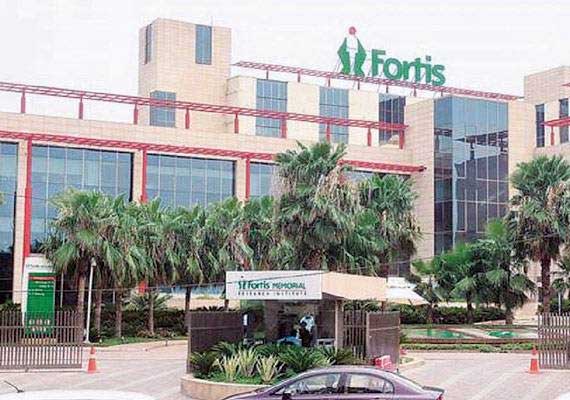Tympanomastoidectomy Treatment in India
treatment
starting from
Introduction
In the realm of ear health, Tympanomastoidectomy stands as a crucial surgical procedure that has brought relief to countless individuals suffering from chronic ear conditions. This unique surgery, known for its effectiveness and precision, targets the middle ear and mastoid bone, alleviating symptoms caused by various ear ailments. In this blog, we will delve into the fascinating world of Tympanomastoidectomy, exploring its procedure, cost in India, symptoms, causes, diagnosis, and treatment options.
Understanding Tympanomastoidectomy
Tympanomastoidectomy is a surgical intervention designed to treat chronic ear conditions, such as chronic otitis media with cholesteatoma, recurrent ear infections, and other ear-related problems. The procedure encompasses two main elements: tympanoplasty, which addresses issues with the eardrum (tympanic membrane), and mastoidectomy, which deals with problems in the mastoid bone located behind the ear.
Symptoms and Causes
The symptoms that might lead to the recommendation of a Tympanomastoidectomy can vary and may include:
- Chronic Ear Infections: Frequent and long-lasting ear infections that do not respond to conventional treatments can lead to severe complications.
- Hearing Loss: Gradual hearing loss that does not improve with hearing aids may indicate underlying issues with the middle ear or mastoid bone.
- Ear Discharge: Pus or foul-smelling fluid draining from the ear could be a sign of a persistent infection.
- Tinnitus: A constant ringing or buzzing sensation in the ear can be a bothersome symptom.
- Vertigo: Dizziness and imbalance may result from complications in the inner ear.
Diagnosis
A thorough examination by an otolaryngologist (ear, nose, and throat specialist) is necessary to diagnose conditions requiring a Tympanomastoidectomy. The evaluation may involve:
- Medical History: Understanding the patient's medical history and ear-related issues is crucial in making an accurate diagnosis.
- Physical Examination: The doctor will examine the ear canal and eardrum using an otoscope to assess any visible signs of infection or abnormalities.
- Hearing Tests: Audiometric tests are conducted to determine the extent of hearing loss and identify potential issues in the middle ear.
- Imaging: CT scans or MRI may be ordered to get detailed images of the ear structures and assess the presence and extent of cholesteatoma or other abnormalities.
The Tympanomastoidectomy Procedure
Before delving into the surgical procedure itself, it is essential to acknowledge that Tympanomastoidectomy is typically performed under general anesthesia to ensure patient comfort and safety. The surgery can be performed using either a traditional "open" approach or an endoscopic method, depending on the patient's specific condition and the surgeon's expertise.
- Tympanoplasty: The first part of the procedure involves repairing the damaged or perforated eardrum. The surgeon carefully removes unhealthy tissue and reconstructs the eardrum using graft materials.
- Mastoidectomy: The next step involves addressing the mastoid bone. If there is a cholesteatoma (a non-cancerous cystic growth) or an infection, the surgeon will remove the affected tissue to prevent further damage to the ear structures.
- Reconstruction: Once the ear structures are clear of infection and abnormalities, the surgeon will reconstruct the ear canal, eardrum, and ossicles (tiny bones responsible for hearing) to restore proper function.
- Closure: After completing the reconstruction, the surgeon closes the incision, and the healing process begins.
Tympanomastoidectomy Cost in India
The cost of Tympanomastoidectomy in India can be significantly lower compared to many other countries, while maintaining high-quality medical care. The expense can vary depending on factors such as the type of hospital, the surgeon's experience, the complexity of the procedure, and the patient's overall health condition. On average, the cost can range from INR 60,000 to INR 2,50,000.
Treatment and Recovery
Following the Tympanomastoidectomy procedure, patients typically require a short hospital stay for monitoring and post-operative care. Pain management and antibiotics are often prescribed to facilitate a smooth recovery. It is vital to keep the surgical site dry during the healing process and avoid activities that could strain the ear.
During the recovery period, the patient will attend follow-up appointments with the surgeon to monitor progress and address any concerns. It is essential to adhere to the doctor's instructions for optimal healing and long-term success.
Conclusion
Tympanomastoidectomy has emerged as a transformative surgical intervention, bringing relief and restoring quality of life to individuals grappling with chronic ear conditions. With its precision and effectiveness, this procedure has become a beacon of hope for those experiencing symptoms such as chronic ear infections, hearing loss, and dizziness.
India, known for its world-class medical facilities and skilled surgeons, offers a cost-effective solution for individuals seeking Tympanomastoidectomy without compromising on quality. As with any medical procedure, it is crucial to consult with a qualified specialist and thoroughly understand the diagnosis, procedure, and potential outcomes before making informed decisions about treatment.
Remember, our ears play a vital role in our daily lives, and investing in their health is an investment in our overall well-being. If you or your loved ones are facing ear-related challenges, Tympanomastoidectomy may be the path to a healthier and happier tomorrow.
How It Works
Need help in organizing medical travel to India?










